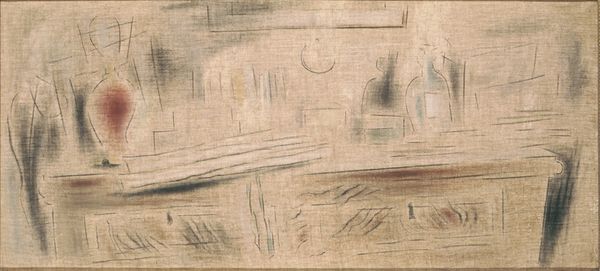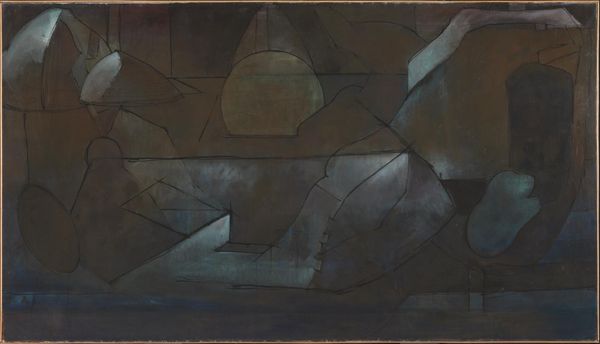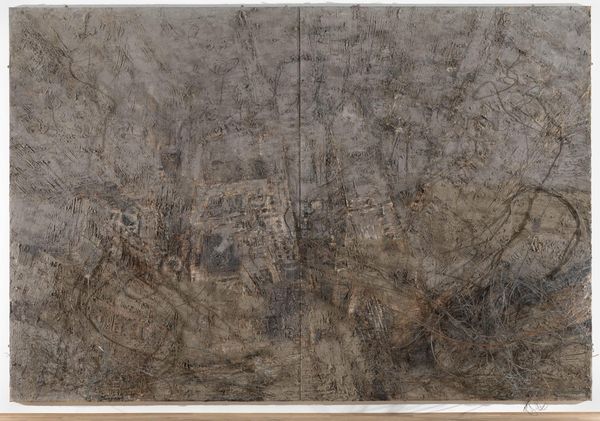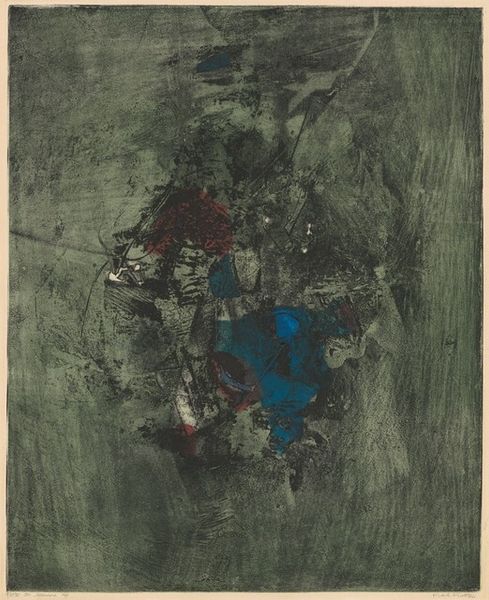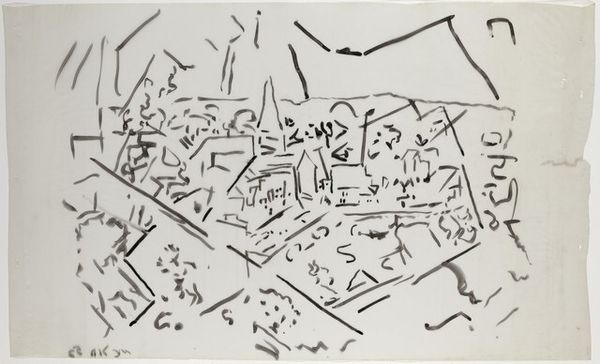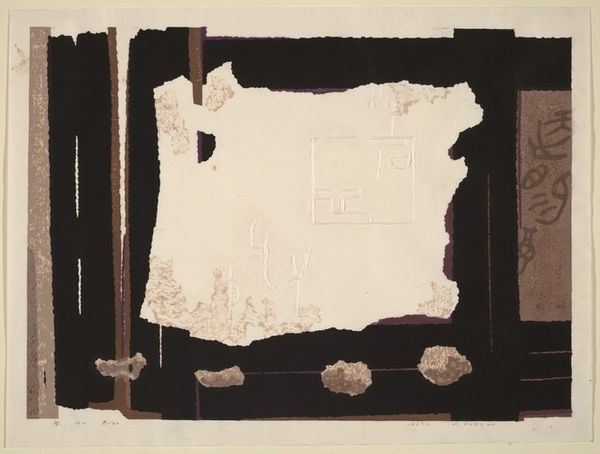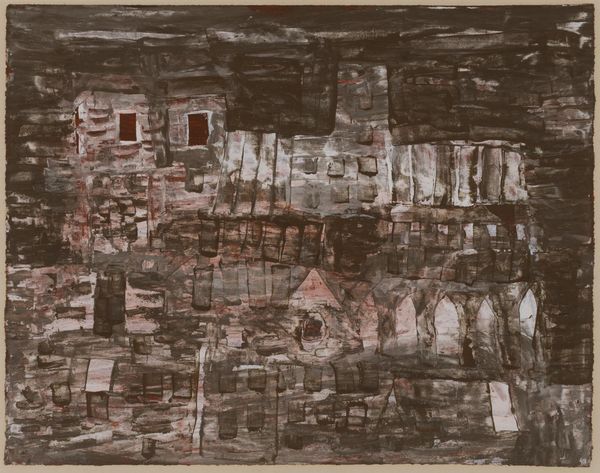
painting, oil-paint
#
abstract-expressionism
#
water colours
#
painting
#
oil-paint
#
landscape
#
oil painting
#
abstraction
#
modernism
#
monochrome
Copyright: John Marin,Fair Use
Editor: This is John Marin's "Autumn Coloring No. 4" from 1952, it’s an oil painting and watercolor. The textures are pretty striking; the blues are like little punches of energy against the overall muted palette. What do you see in this piece? Curator: I am intrigued by how Marin utilizes compositional tension in "Autumn Coloring No. 4." The placement of the square, off-center, creates a visual imbalance. Furthermore, the brushstrokes are fragmented; what do you make of their contribution to the overall structure? Editor: They make me feel the speed, like a fleeting impression of a landscape, not something solid. Like he’s trying to capture the energy of autumn rather than a literal scene. Do you think that was intentional? Curator: Undoubtedly. Observe how the planes of color interact; the blues juxtapose against the ochres and greys. Semiotically, each hue contributes to a fragmented representation. This intentional fracturing rejects a conventional pictorial structure, and invites deconstruction. Editor: So it's not just a picture of something, but an idea *about* how we see? Curator: Precisely. It beckons the viewer to participate actively in the image's construction. The essence is a pure experience, devoid of superficial subject matter. Editor: So, focusing on just the brushstrokes and colours… it’s almost like a musical score, the way they build on each other. Curator: An astute observation! Thinking of this painting as musical resonates – one might view those dashes of blue as percussive accents that provide dissonance and momentary disruption. Editor: This really makes me see abstract art in a new light. I guess I was too focused on looking *for* something instead of looking *at* something. Curator: A very insightful realization! And hopefully, one you'll carry with you as you keep learning.
Comments
No comments
Be the first to comment and join the conversation on the ultimate creative platform.

